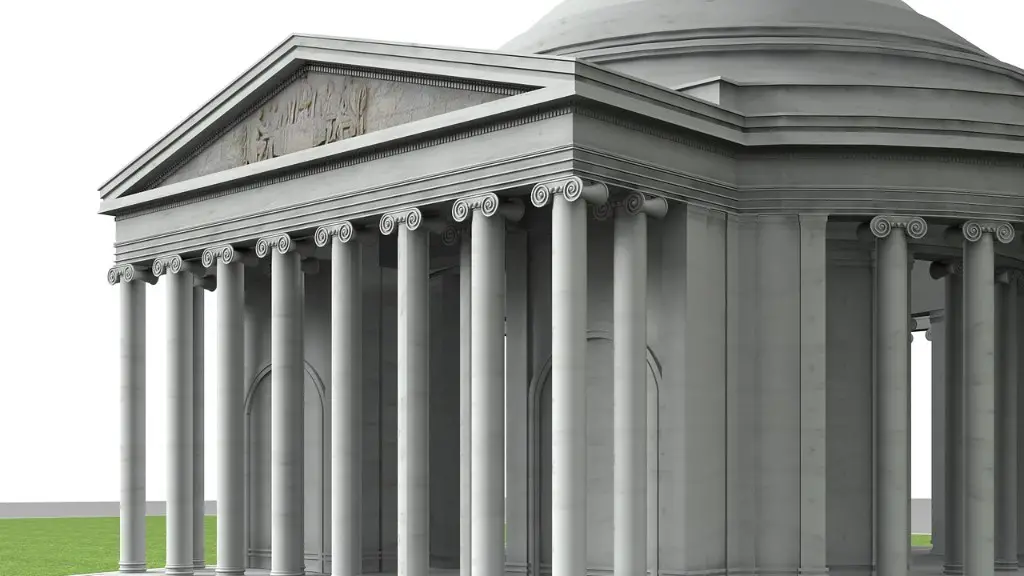Math is an unavoidable aspect of architecture. Many aspiring architects find the math part of the profession intimidating. But is math really required to become an architect? The answer is yes. Math is an essential tool that architects use to plan, design and construct buildings and the surrounding environment. It is an invaluable part of the process, no matter how intimidating it may appear.
Architects must rely heavily on mathematics to create buildings that look and perform as expected. However, the techniques and mathematics used vary depending on the type of building and the local environment. For example, architects must plan ahead to make sure the building is compliant with local building regulations, which require a deep understanding of concepts such as geometry and trigonometry.
Math is also vital for the design process. Many architects use Computer Aided Design (CAD) software to create designs for new structures. As CAD uses mathematical equations to draw shapes and objects, an architect must have a good grasp of algebra and geometry to be able to grasp the principles of designing with software.
The construction phase of a project is also heavily reliant on mathematics. Architects use mathematical calculations to determine the correct proportions of a building and the forces acting upon it. They also need to consider the effects of the local climate and environment, which require knowledge of trigonometry, statistics and probability.
From measuring a space to planning a project, the use of mathematics is essential. A thorough understanding of mathematics can give architects a creative edge, helping them to create innovative and stylistic design solutions. It also allows them to draw precise and accurate plans, ensuring the finished product meets the expectations of the client.
Despite its importance, math is not the only tool needed for architecture. Architects must also have an eye for design and an understanding of the creative process. They must be able to embody the technical knowledge they have acquired and turn it into a functional, aesthetically pleasing structure. They must have an understanding of the materials available, their durability and how they can be used to create attractive designs.
Good communication skills are also essential for architects. Many projects involve dealing with construction and engineering teams, often requiring conversations with those who may have different backgrounds and understand the matter differently. Having the ability to effectively explain and discuss the design of a project is integral for success.
Technical Knowledge
Technical knowledge also plays an important role in architecture. With new technologies and building materials being developed, it is important for architects to stay up to date with the latest trends and techniques. This knowledge will allow them to make the most of their resources and use the most effective techniques in their projects.
Architects must also be able to identify and understand the problems which can arise during construction. This requires a good knowledge of building regulations and engineering principles, as well as an analytical mind to consider the various solutions. The notion of economy is also important for considering the most cost-effective option.
In addition to all these skills, architects must also have the ability to interpret and visualize the results of their work. It is essential to be able to create a mental picture of how the design will look in reality. Having an understanding of the different techniques involved in construction, as well as a good sense of aesthetics also helps to create beautiful, impactful designs.
In conclusion, mathematics is an essential part of architecture, but it is certainly not the only tool needed. Architects must also have an understanding of the creative process, technical knowledge and good communication skills, all of which are essential for the job.
Transformation Skills
Architects must also possess the necessary transformation skills to execute their designs in the real world. This involves hands-on skills such as drawing plans and measuring and carving out spaces. Although this skill can be acquired through experience, architects must also be able to visualise their designs in 3D, enabling them to effectively plan out the structure before construction begins.
Understanding building regulations is also key for success in the transformation stage. Architects must understand the regulations to ensure their designs adhere to the regulations, whilst also taking into account the regulations for foundations, structures and materials that must be adhered to in order to produce a building that will safely stand the test of time.
Architects must also ensure their designs fit within the budget and are delivered in a timely manner. To do this, they use sophisticated estimating strategies, including quantity take offs, cash flows and scheduling practices. This requires knowledge of many different domains, including finance, estimating and scheduling.
Once the design is complete, the construction phase follows. To ensure that the project goes according to plan, architects must remain in close contact with the builders and engineers. This includes attending site visits, coordinating work between the different trades and closely following up with the project’s progress.
Construction projects involve many stakeholders and require close collaboration among all members. Architects must use communication and problem-solving skills to maintain a healthy dialogue among all parties and to promptly solve any issues that may arise. This requires a thorough understanding of the project and its implications, along with meticulous attention to detail and tactful diplomacy.
Planning for the Future
Architecture is a field which requires a clear vision of the future. Architects must be able to visualise the effects of the implementation of their designs in the years to come, anticipating possible future changes and trends. They must take into account the impact of their decisions on the environment, public safety and economics in order to craft responsible and sustainable designs, instead of focusing solely on aesthetics.
Architects must also stay abreast of changes in technology and materials. With the introduction of new materials and technologies, such as land surveying systems and 3D printing, architects now need to maintain a current knowledge in these areas to ensure they are creating the best design solutions possible.
Architects must also be creative and entrepreneurial. They are always striving to think of innovative solutions to create a beautiful and functional building. Innovation can take many forms, from introducing new materials and design methods, to thoughtful problem-solving and efficient budget planning.
In order to plan for the future, architects must demonstrate excellent organization, management and planning skills. They must be able to set timelines and plan ahead, whilst also considering the key aspects of the project without letting their emotions get the better of them. Architects must also be able to delegate tasks and manage resources effectively to ensure that the project stays on track.
Being a Leader
Above all, architects must demonstrate leadership. They must possess the required communication and negotiation skills to effectively guide the project to completion. Architects must also be closely involved in the project and be ready to take control and make decisions when needed.
Architects must be passionate and driven, with a good knowledge of the history of their chosen field. They must understand the basic elements which make up a design, as well as the scientific principles behind construction, in order to remain up to date in the industry.
After a project is completed, architects must reflect upon the result. They must evaluate their design, analysing both its successes and its shortcomings to identify areas for improvement. This helps to set the foundations for the next project, allowing architects to build upon their experience and create better designs in the future.
Whilst there is no denying that mathematics plays an integral part in architecture, it is also clear that it is not the only skill required. Architects must also demonstrate a good understanding of the creative process, possess technical knowledge and demonstrate excellent management and leadership skills. There is no one-size-fits-all approach in architecture; each project is unique and requires its own individual approach if it is to be a success.





